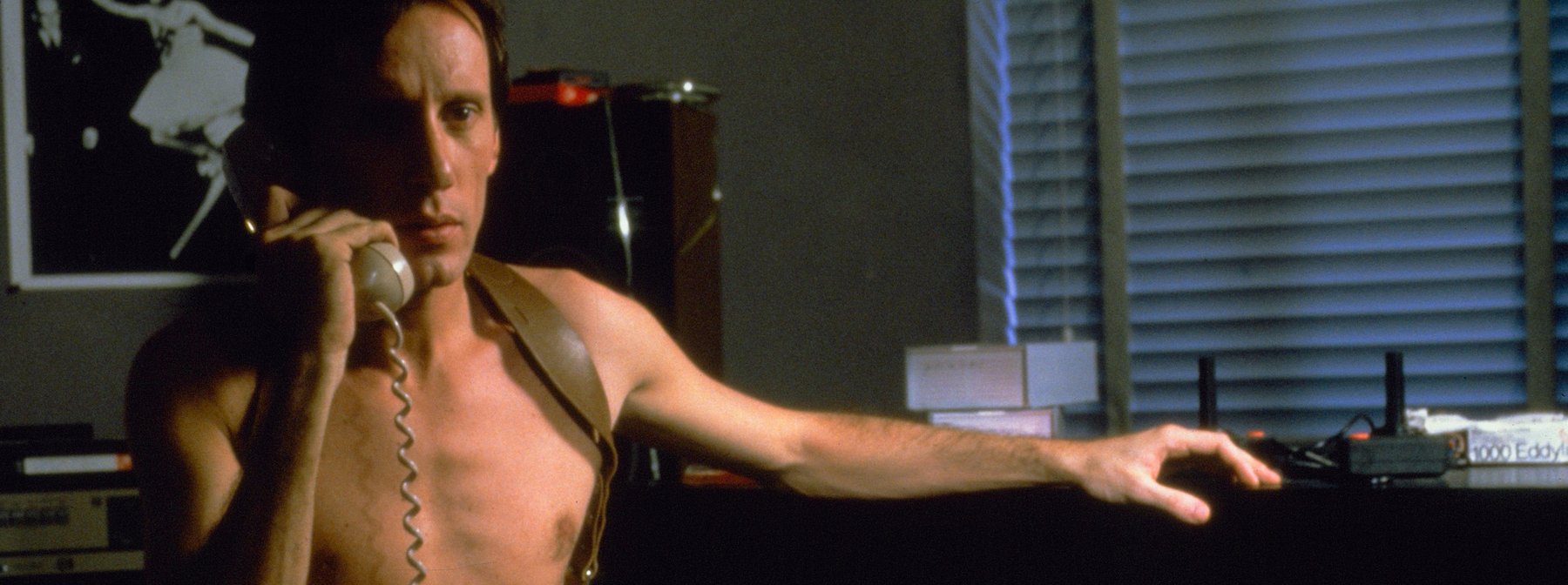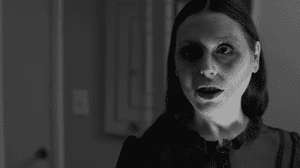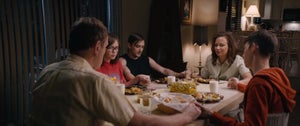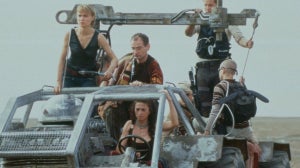
“The contemporary Horror film tends to play not so much on the broad fear of Death, but more precisely on the fear of one’s own body, of how one controls and relates to it.” —Phillip Brophy
A subgenre of excess, the (fleshy) roots of body horror [1] can be found within early Gothic literature; most notably the monstrous resurrection at the (dead) heart of Mary Shelley’s Frankenstein; or, The Modern Prometheus (1818) [2]. Although it can still involve the classic monsters and their transformations, as a concept body horror is more postmodern in approach. Not only is it concerned with violations of the flesh and, ultimately, the destruction of the body, such as sadomasochism, gratuitous violence, mutilation, and disease but also with how less physical influences — emotional states, the media, and virtual environments — manifest themselves as the ‘new flesh’. Here are ten defining moments long-lived…
Half the woman — Freaks (1932)
Banned for over 30 years, Tod Browning’s per-Code film works as much on mood and subversion as it does on the inspired horror; its grotesque reputation often associated with the variety of ‘bodies’ that inhabit the screen. But it is a prime example of those assumed to be ‘monstrous’ becoming the most sympathetic as a sideshow of performers enacts their revenge on the beautiful scheming trapeze artist Cleopatra. Of course, there is no doubt the imagery still shocks to this day and has been argued both for and against the exploitation of people with disabilities; some theorists of whom have highlighted its anti-eugenics message. The cast of characters becomes both a macabre and beautiful representation of the Depression era and one would be amiss, especially in today’s world, to label their forms horrific. Once the final iconic scene of Cleopatra is revealed — seemingly bisected, her mutilated body melted and deformed to resemble a ‘human duck’ — the body horror on display represents her true nature.
https://www.youtube.com/watch?v=jzoKz5EsUro
Face peel — Eyes Without a Face (1960)
Released the same year as Alfred Hitchcock’s Psycho and Michael Powell’s Peeping Tom, Georges Franju’s film is a definitive addition to this triptych of horror. Mad surgeon, Dr. Génessier (Pierre Brasseur), is obsessed with restoring the disfigured face of his daughter Christiane (Édith Scob) after it was damaged in a car accident he caused. However, her unsuccessful restoration has come at a heavy price; Génessier driven toward creating a surgical flytrap where his mistress, Louise (Alida Valli), lures the victims to his laboratory so he can perfect his facial transplants. Once we arrive at the infamous cut and peel it is made all the more unsettling by how much it lingers over Génessier’s methodical process; the victim is sedated and marked out before the surgery. Of course, it’s a gory scene that shows all the early hallmarks of French horror we now associate with the New French Extremity but also a classic moment of body horror; the fragility and tragic nature of Christiane making it all the more excruciating to watch.
https://www.youtube.com/watch?v=CEjrg-L8lvs
Bad taste — Blood Feast (1963)
Often considered the first splatter film, Herschell Gordon Lewis’ cheap ‘n’ nasty affair is certainly a vulgar piece of work. But despite its misgivings, Herschell’s daring use of explicit imagery ushered in an explosion of explicit and excessive violence waiting to be exploited and for these reasons alone remains a significant entry in the history of horror. What is seen onscreen doesn’t carry the grotesque unnatural biological transmutations that began to take place a decade later in Cronenberg’s work but the Godfather of Gore’s violations of the human body were certainly the first to probe new depths of discomfort, bypassing special effects and, instead, importing his ‘parts’ locally. In an infamous scene of horror, a tongue is yanked from the mouth of an unfortunate female victim, created by actually placing a real sheep’s tongue inside the actress’s mouth. The admittedly ‘outlandish’ film was so effective that audiences believed they were watching a snuff movie.
https://www.youtube.com/watch?v=Dy2At9VOFgM
Baby fever - Eraserhead (1977)
David Lynch’s feature debut (five years in the making) is a claustrophobic and suffocating nightmare. Despite him often burying or sidelining what his films represent, at least as an audience we can relate to the pressures of marriage and anxieties of fatherhood he captures through the blurry eyes of Henry Spencer (Jack Nance). The imagery is presented like an unearthed silent movie; the industrial atmosphere weighing heavy on the environment as a baby mewls in the darkness. In the most unsettling sequence, Henry cuts the bandages off his deformed and feverish baby and with its convulsions it is revealed the bandages are all that hold his fragile child together. Organs exposed, he punctures the lungs in an attempt to end the suffering until the remains erupt in what appears to be a revolting mass of porridge-like puss. A natural (cyberpunk) inheritor of Lynch’s film would be Shinya Tsukamoto’s Tetsuo: The Iron Man (1989) which equally revels in its grainy industrial surrealism.
https://www.youtube.com/watch?v=7WAzFWu2tVw
Chestburster - Alien (1979)
If there was ever a contender for the greatest sci-fi horror of all time then Ridley Scott’s masterpiece would certainly be right at the very top of the list. For some, it is the greatest or at least inseparable from John Carpenter’s perfect companion piece, The Thing, which it helped pave the way for. Another slip into Lovecraftian territory, the tendrils of H.R. Giger’s creation is something far more unnerving, the evolutionary designs of the Xenomorph a marriage of biomechanical and sexual imagery ready to rape us all. Of course, John Hurt’s chestburster scene is not only a standout moment in the history of horror but the history of cinema. “I admire its purity.” Ian Holm’s android antagonist Ash perfectly summarising this classic piece of body horror.
https://www.youtube.com/watch?v=jQ5lPt9edzQ
Miscarriage madness — Possession (1981)
Polish director Andrzej Żuławski provides one of the most disturbing scenes in the history of horror in this odd mix of divorce drama, psychological nightmare and… espionage thriller? Witness to the alienation and horrific breakdown of Anne — a devastating performance from Isabelle Adjani — an infamous scene culminates in, what appears to be, a violent miscarriage at a Berlin subway pass. She moves from vacant hysteria to manic convulsions as her grocery bag explodes in an eruption of milk now smeared against the walls while she relentlessly spins and spasms. Slumping down she becomes a writhing mass until paralyzed, and, as though about to cause herself an embolism, heaves out a horrendous sight from every orifice. Reality, analogy, metaphor or the afterbirth of Carlo Rambaldi’s Lovecraftian monster she’s been fucking? It’s brilliant (and revolting), whatever you make of it.
https://www.youtube.com/watch?v=uDpFpzbwfiw
Chest chomp - The Thing (1982)
From amorphous Lovecraftian body-melds to heads splitting apart, there are many classic scenes in John Carpenter’s definitive sci-fi horror that creep under the flesh and tear man (and dog) asunder. But it is the defibrillator scene that jumpstarts the Norris-Thing’s transformation that manages to deliver an almost unrivalled moment of terror as a chest cavity opens and ribs chomp down and amputate Dr. Copper’s arms. For more details on the scene and Rob Bottin’s glorious work on The Thing, read my recent 40th-anniversary pieces here and over at Fangoria.
https://www.youtube.com/watch?v=p35JDJLa9ec
Is that what I think it is? - Videodrome (1983)
Although Cronenberg is averse to the term ‘body horror’ there is no escaping his influence in shaping this weird but thought-provoking subgenre. The wealth of body horror on display in his films was reinvented every time, primarily through important observations on the human condition, and, despite some goofy concepts, they have always remained repulsive and terrifying [3]. In Videodrome (1983) he pushes things much further commenting on the impact of violence in society and the media’s thirst for such content. Legendary special makeup effects artist Rick Baker — following his Oscar-winning success and groundbreaking work on An American Werewolf in London (1981) — creates the incredible (displaced) imagery of a handgun — quite literally the merging of hand and gun — vagina stomach and throbbing, fleshy television as Max Renn (James Wood) rapidly loses touch with reality through his paranoid hallucinations.
https://www.youtube.com/watch?v=v8BUXKcp8zE
Hellish bodies - Hellraiser (1987)
In terms of iconic characters, few wear the body horror so effortlessly as Clive Barker’s Cenobites. From the moment they appear on screen, their pained presence is the epitome of the tortures of hell; Barker’s reimagining of those who frequent such a place more akin to the nightmarish imagery of Hieronymus Bosch than anything else we are familiar with. This is less a fiery pit and more an extra-dimensional realm that houses sadomasochistic and fetishistic ‘flavours’ that have become both aesthetics and themes of the subgenre. The Hell Priest — dubbed ‘Pinhead’ — is a top tier horror villain, his intricately spliced face resembling horrific acupuncture. The other cenobites are bloodier variants with their own set of wounds; the ‘Chatterer’ with his exposed mouth and clattering teeth, the blind obese ‘Butterball’ with his stomach opening, and the female Cenobite ‘Deep Throat’ with her wired head peeling a vaginal-looking wound in her neck. Indeed… they have such sights to show us.
https://www.youtube.com/watch?v=8mOn4h0lgKQ
Orgies ‘n’ that - Society (1989)
After his success producing Stuart Gordon’s Re-Animator (1985), From Beyond (1986), and Dolls (1987) back-to-back, Brian Yuzna continued to explore the more hidden perversities of America, this time as director. As a horror, the film is an uncomfortable schlocktastic satire on the Teflon veneer that permeated US society at the time. As a comedy, it fleets between cringe, slapstick and genuine insanity as Japanese (special effects) artist Joji Tani — better known as ‘Screaming Mad George’ — delivers some of the most grotesque (and obnoxious) body horror you will ever see. This is a film at the height of the gratuity and excessive nature of ’80s horror — makes the Re-Animator ‘giving head’ shot look conservative — merging sex and gore into a seething mass of liberalism. In its final climax, the sickening sexual act of ‘Shunting’ quite literally throws everything at the walls in a cross between Salvador Dalí’s Autumnal Cannibalism (1936) — one of Mad George’s original influences — and a deeply twisted episode of Looney Tunes.
https://www.youtube.com/watch?v=inrBU8juGI8
The term ‘body horror’ is thought to have derived from the Body Horror issue of the University of Glasgow’s film journal Screen in 1986 (vol. 27, no. 1). Published were various essays that included a reprint of Phillip Brophy’s 1983 article “Horrality: The Textuality of the Contemporary Horror Film” which discusses “what appears to have been (on reflection) the peak of a small ‘golden period’ of the contemporary horror film.”
- Mary Shelley’s Frankenstein (1994) 4K, Blu-ray.
This can be seen in the (sex) zombies and squirming terror of Shivers (1975), armpit penis and zombies of Rabid (1977), birthing and killer kids of The Brood (1978), the exploding heads of Scanners (1981), and Cronenberg’s own Kafkaesque Frankenstein tale The Fly (1986).

Related Articles






